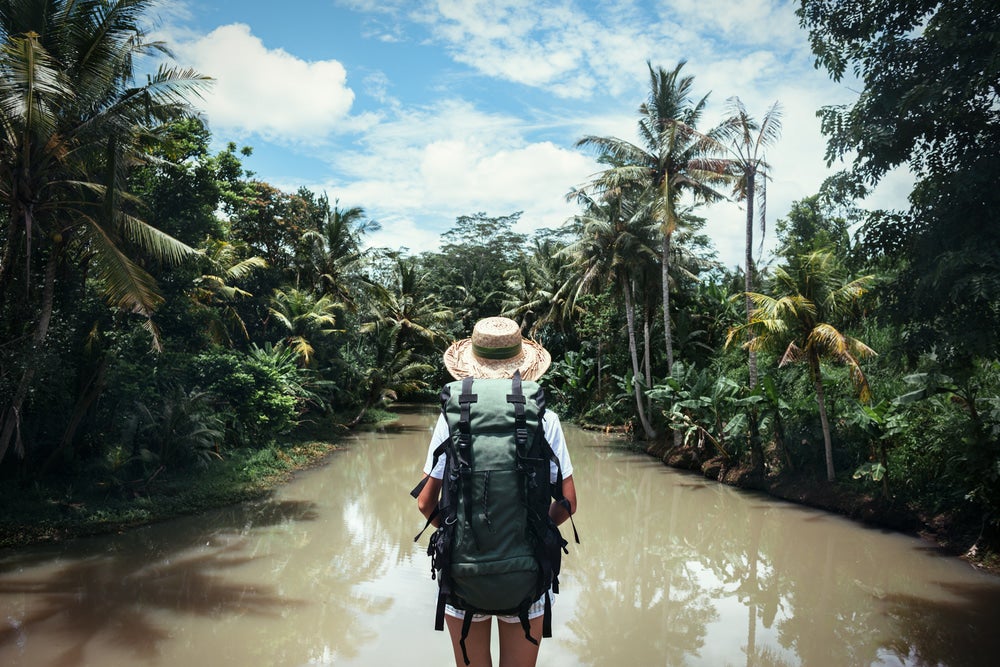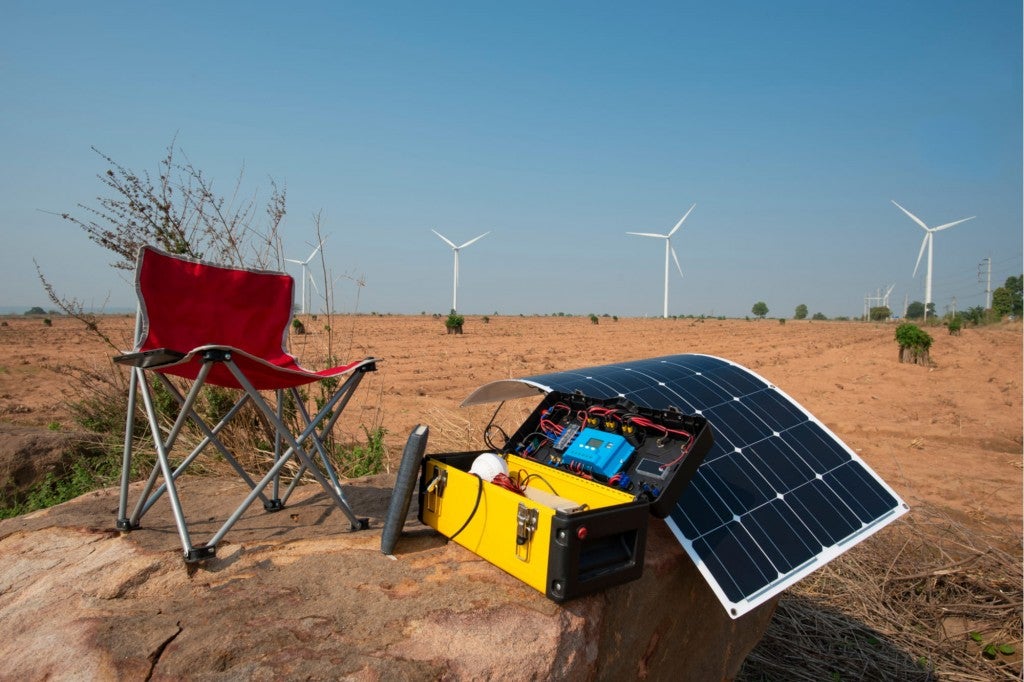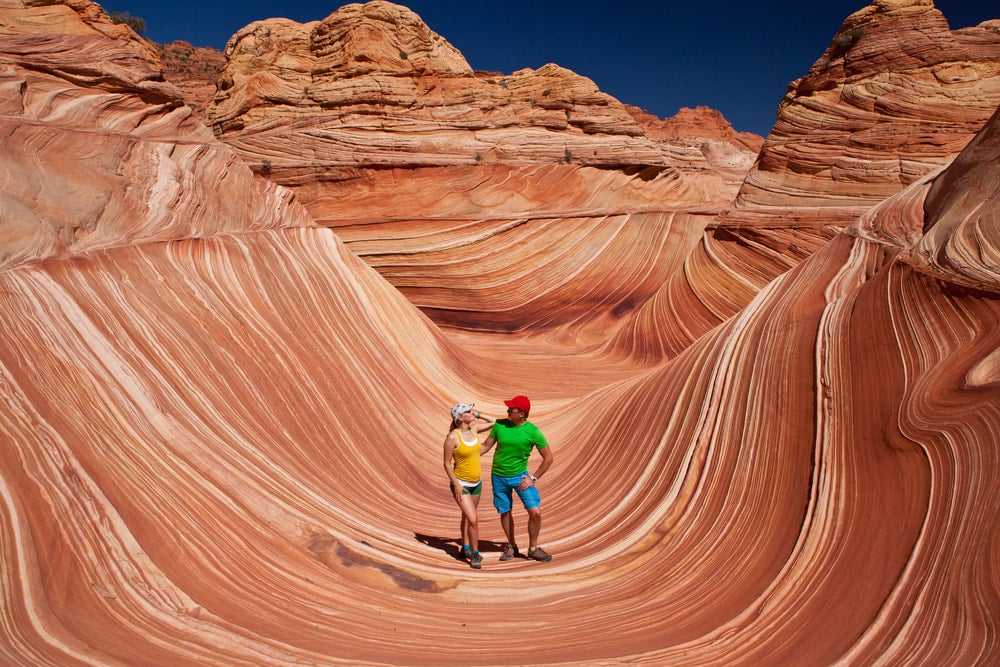This post about what to pack for camping was brought to you by our friends at Ethnotek, who make 30 liter backpacks that are as beautiful as they are durable. Whether you’re going for a short day-hike in your own backyard or racking up airline miles, their travel gear will help you go further in style.
If you’re anything like me, the thrill of booking a trip to one of the destinations plastered on my Pinterest boards is quickly superseded by fretting over what to pack. A car camping trip isn’t too tricky, because I can throw all of the “what-if” items in the trunk, without much concern for space. But camping trips that involve flights are a whole different game.
But planning what to pack for camping doesn’t have to be hard, even when your route to the campground involves planes, trains, and maybe more.
What To Pack For Camping When You’re Flying to Your Destination
- Seasonal and weather-appropriate clothing. Think light layers and pieces you can easily mix and match. Cut down on duplicates and extras whenever possible. Wearing bulkier layers like your rain jacket or puffy through the airport can save room in your pack, too.
- Travel-size bottle of biodegradable soap that can double for your body and refreshing your clothes.
Ultra-light and compact versions of your camping essentials. Now isn’t the time to bring the massive 6-man tent you can stand up in, or your queen-size air mattress. This is the occasion to practice fitting all your gear in or strapped to your pack. - Do put like items into small organizational containers. It’ll help you keep track of everything, and it’ll make it easier to squeeze your gear into your checked and carry on bags.
- Make a list of items to ship, rent, buy, or skip. You can’t bring everything on the plane— gas for your camp stove, for example, is a no-go. And while you can check skis, snowboards, and bikes, you might find it’s easier and more cost effective to rent those from an outfitter at your destination.
- Don’t double up on items made redundant by campground amenities. If you do your research and make your reservation wisely, you can skip the camp stove and just use the grill on site, for example. Same for purchasing food at campgrounds with a general store, finding a site with water spigots and bathrooms, or niceties like WiFi.
Know Your Limits Before Your Go
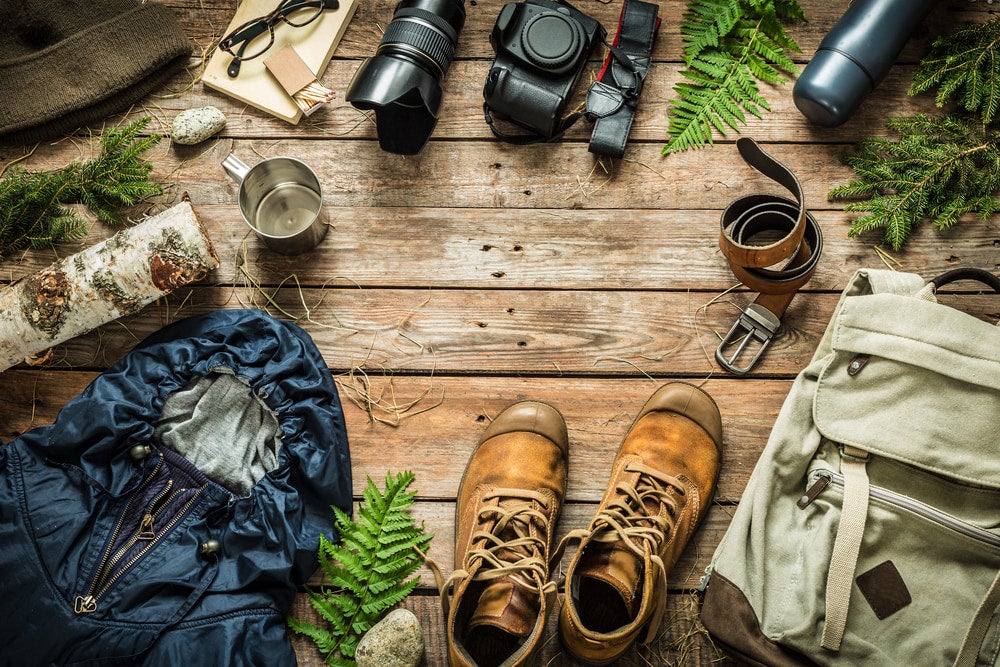
Photo from Shutterstock.com
First, determine which forms of transportation you’ll need to reach your campsite— a plane is likely just one of several legs of your trip. Rental cars, taxis, busses, trains, and shuttles can all have an impact on what and how you pack. You’ll also want to account for the specific baggage guidelines for the airline with which you are traveling— especially if you’re bringing bulky gear like skis or a two-burner camping stove.
Once you know the limitations on the dimensions and weight of your luggage, you can make sure your backpack will fit the bill and start planning your game of gear tetris. Check the weather forecast in your destination to see how many layers you’ll be needing, and which type of gear will be necessary to keep you comfortable.
It’s also a good idea to figure out how much weight you can comfortably carry over long distances, since you’ll at some point have to carry everything. Often the simplest answer to the question of what to pack for a camping trip comes down to how much weight you can manage.
The Dyrt PRO ensures easy trip planning and helps you deal with last-minute cancellations. With the upgraded version of The Dyrt app, you can access campgrounds, maps, and photos for offline use during outdoor adventures.
To Rent or To Pack: That Is The Question
From there, you can split your packing list into two columns: things you already own and want/need to bring with you, and things best purchased or rented at your destination to save room and baggage fees, and avoid airline regulations. Lighters, aerosols, unemptied camp stoves, and stove fuel, for example, aren’t allowed on planes, regardless of whether you’re checking or carrying on your bag.
You might find it most efficient to swing by an outdoor retailer and stock up on things like freeze dried camping meals or a brand new item you’re buying just for your trip, like a puffer coat or rain jacket. You might prefer, too, renting bulky items like ski boots, trekking poles or a mountain bike from a local outfitter, rather than wrangling with the airline.
Even bigger items like tents and sleeping bags might be worth renting. It’s no big deal to hang them off the outside of your bag on the trail, but airlines can be choosy about spatial dimensions as much as weight.
Be prepared to pay checked baggage fees—and not only because of the size of your backpack. Some items, like knives, are too expensive to purchase for single use, but also aren’t allowed in your carry-on. That’s good news if you want to bring along detergent, sunscreen, bug repellant, waterproofing spray or other liquids over the TSA carry-on minimum.
Embrace Ultra-Light Packing Principles

Photo from Shutterstock.com
The great thing about packing for any trip— whether you’re camping or not— is that the principles of minimalism and versatility ring true no matter what sort of adventure you’re planning. However, if you’re used to car or RV camping, you might find it hard to plan your packing list, knowing you can’t chuck an extra camp chair or cast iron skillet into the trunk just in case. That makes flying to your camping destination a great opportunity to practice backpacking or ultralight packing techniques.
That extra-roomy family-size tent that easily fits in the cargo box on top of your car, for example, is no big deal at a drive-in campsite. You probably want to downsize, however, to a one or two person tent with a smaller footprint that weighs just a few pounds. You could also give hammock camping a try— then you won’t even need to worry about tent poles. Either will take up less room in your backpack and be easier to carry between stops and on the trail.
If you are a big travel buff in general, beyond outdoor adventures, packing ultra-light might help you discover new pieces of gear that can pull double duty for your next hotel jaunt, too. A 30 liter backpack, for example, can hold enough gear for day hikes and shorter camping trips, and makes a great carry-on in general. A beautiful, durable dopp kit, travel organizer, and zipper pouches keep the little incidentals wrangled in your backpack.
Travel accessories like microfiber towels, packable blankets, and soap caddies are just as handy on the trail as they are at the hostel. Trade out your chunky over-ear headphones for a pair of lightweight, packable bone conduction headphones that slip into a side pocket with ease.
Making ultra-light swaps will mean extra expense at the outset. That said, you’ll gain a lot of flexibility and ease in your travel style, especially if you get a taste for destination camping trips. You’ll also be in a great position to try backpacking and thru-hiking if you already have the right gear to carry everything you need on your back.
Simplify What You Pack For Camping By Relying on an Outfitter
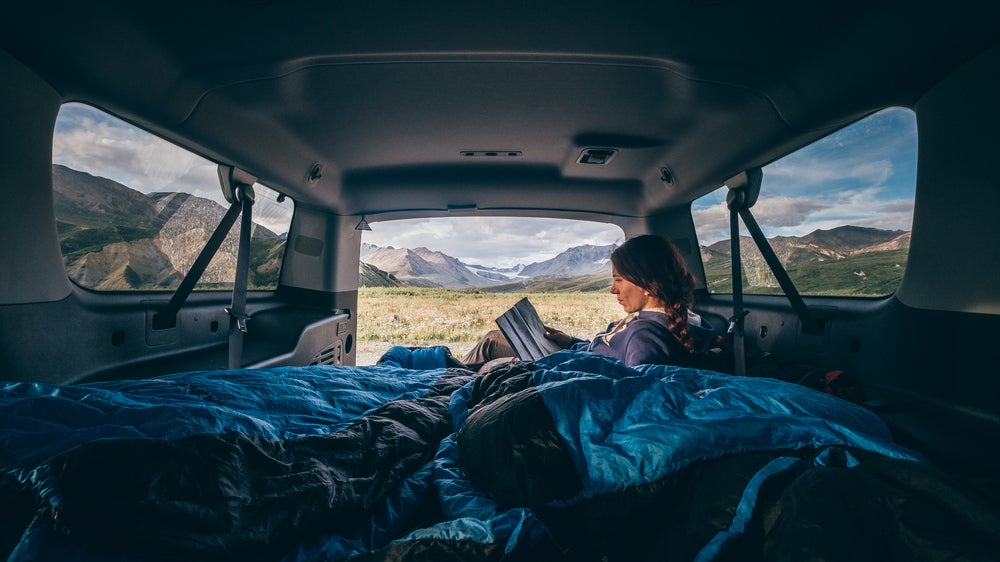
Photo from Shutterstock.com
If the ultralight approach to campground packing doesn’t appeal to you, there are other options that make flying to your outdoor destination quite simple. You might sign up for a guided trip that includes equipment rentals, for example. There are numerous organizations such as Mazamas, Explorer Chicks, and Hike Like a Woman that arrange trips everywhere from National Parks to foreign destinations with much of the necessary gear included.
You can also go the rental route— not in terms of renting gear, but renting a camper van, trailer, or gear pod that seriously reduces what you need to pack. Not only does renting a camper or RV take care of both your transportation needs and lodging, often these services include cooking equipment, lighting, and bedding.
Another option is to work off of bus or train routes once you’ve flown to your destination. Traveling by train is a lovely way to take in the scenery without needing to keep your eyes on the road, and the baggage policies are often quite generous. If you are planning a trip from, say, the East Coast to Glacier National Park, it might be more affordable and more scenic to fly into a big airport like Seattle or Portland and take the Empire Builder to Glacier than trying to fly directly into Montana. Likewise, if you find a cheap flight into New York City, you can easily take the train to one of the small upstate villages like Pawling, NY that sit right off the Appalachian Trail.
It can be fun and affordable to practice camping without a car , or at least without making a full cross-country road trip with your own vehicle. Not only that, this approach is a great way to ease into destination camping without deviating too much from how you already pack for travel. All you need to throw in your backpack is your clothing, food, toiletries, your map and electronics, and a good headlamp or flashlight.
What You Pack For Camping Can Be Super Simple, Even When You Fly
Deciding what to pack for a camping trip doesn’t have to be hard or stressful. Simply reduce the size and weight of whatever gear you can. Pack the bare minimum of clothing for the weather and length of time you’ll be gone, factoring in the ability to wash along the way or simply get a little stinky (it’s the great outdoors, after all!).
Remember you can buy, rent, or borrow what you need at your destination if you forget something or can’t get it on the plane. And most of all, keep in mind that when you’re in beautiful surroundings, it doesn’t take fancy gear or a lot of creature comforts to make you feel that you’re exactly where you’re supposed to be.

